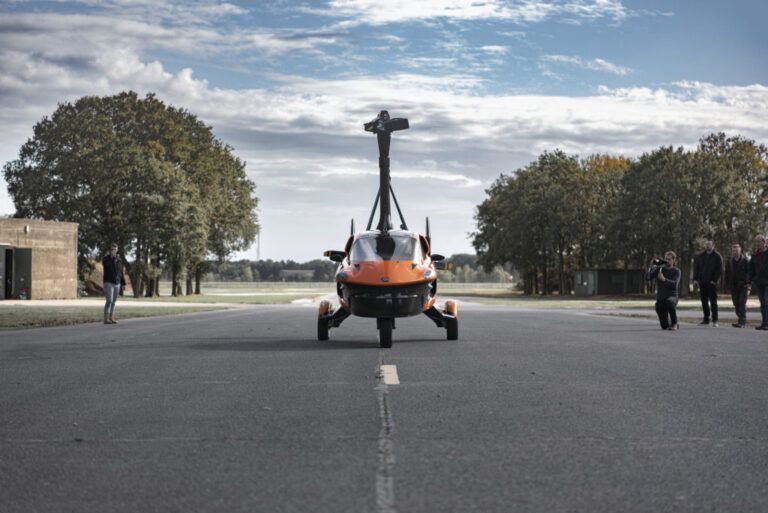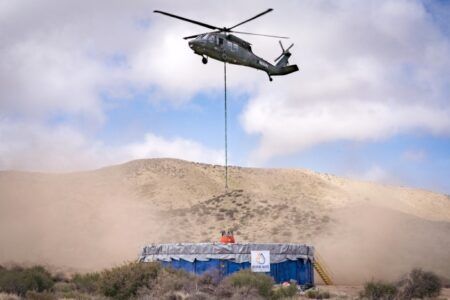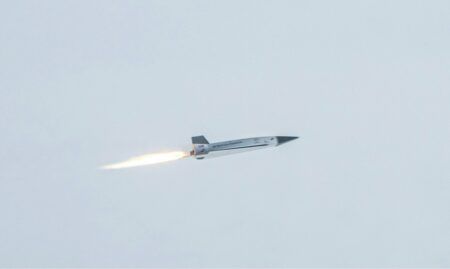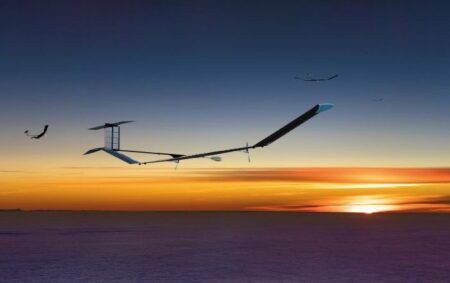Listen to the full interview with Robert Dingemanse, CEO of Pal V now by subscribing to our new monthly Aerospace Testing International podcast via Apple podcast, Spotify or Podbean
Netherlands-based company Pal-V expects to achieve road approval for the world’s first flying car within the next few months, followed closely by certification for its use as an aircraft during next year.
Pal-V’s Liberty hybrid car / gyroplane has been in development for more than 12 years. The company, which employs around 75 people, has taken orders from people in 14 countries, is training its first “fly drivers” inhouse and intends to deliver the first flying car before the end of 2021.
The Liberty is powered by separate petrol engines for road and air use. It uses an unconventional three-wheel design for its road mode and converts into a self-stabilizing gyroplane for flight mode.
According to Pal-V’s CEO Robert Dingemanse, a gyroplane has inherent design qualities that make it suitable for use as a flying car. He said, “Aircraft require large surface areas, which are facilitated by large rotors or large wings. But a large surface area is very hard to deal with on the road.
“Typically flying car projects use small wings and their stall speed is too high, but they are still very large for the road, like a truck which is hard to maneuver and full of lots of fragile aviation technology.
“The Liberty can fold in a couple of minutes and is compact on the road, but still has the surface area required to make it safe and effective in the air. We don’t have a stall speed, you can go to zero airspeed and just descend safely fully under control, hit the gas again to continue or land without the engines.
“Meanwhile on the road its footprint is just four meters by two meters. It’s 170cm high, so it fits any parking spot or in any garage. Without making compromises, the Pal-V safely folds its rotor system to become small enough for a compact car.
“Alongside minimizing the weight and achieving a marketable performance in the air, the biggest challenge has been working out how to make it so the rotor blades, propeller and tail can be folded and fixed in a way that makes it safe in all circumstances, by anybody in a couple of minutes.”
Certification and flight testing
The Liberty is being certified under CS-27 / Part 27 for rotorcraft by aviation authorities including EASA and the FAA, according to a certification strategy that was agreed in 2009. Certification is also being obtained for the propeller, which is a new design developed by Pal-V engineers. Design, product and maintenance organization approvals are also being progressed by the company.
Pal-V expects to begin flight testing the production version of the Liberty after road certification is obtained. According to Dingemanse, at this stage around 80% of the company is aviation-focused as opposed to automotive and around half of the company’s man hours are going into certification.
“Certification is the heart of an aviation company,” he said. “If you don’t build with certification in mind from the beginning, you will never come to the end of the project.
“We have a full agreement with EASA on the certification base, which took six years of continuously delivering proof about all the systems and subsystems. We are now in the compliance demonstration phase and the whole company has changed into a testing and certification house.”
Last year Pal-V began working with GKN Fokker to help with certification and manufacturing. It is also working with GKN and “Korean companies” on an eVTOL (electric Vertical Takeoff and Landing) aircraft that uses elements of Liberty’s technology and will be available before the end of this decade.
Despite the growth in eVTOL projects and the challenges presented by Covid-19, Dingemanse is confident about the Liberty’s prospects: “We are striving for delivery by the end of next year.
“It’s a thrilling time for aviation, but eVTOLs are more like a bus than an air taxi – they will take you from station-to-station. The Pal-V Liberty can take you from door-to-door. We are five to ten years ahead of that segment.”
Pal V Liberty Specifications
Capacity: 2 persons
Maximum Take-Off Weight: 910kg
Dimensions Drive-mode: 4m L x 2m W x 1.7m H
Dimensions Flight-mode: 6.1m L x 2m W x 3.2m H
Drive mode
Max Speed: 160km/h
Acceleration: (0-100 km/h) <9 seconds
Engine power: 100hp
Range: 1,315km
Flight mode
Maximum speed: 180km/h
Engine power: 200hp
Maximum operating altitude: 3,500m
Take-off distance: 330m
Max range: 500km
Max endurance: 4 hours





